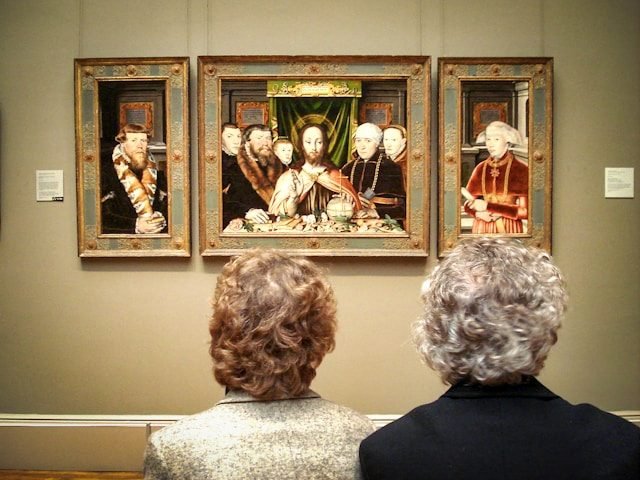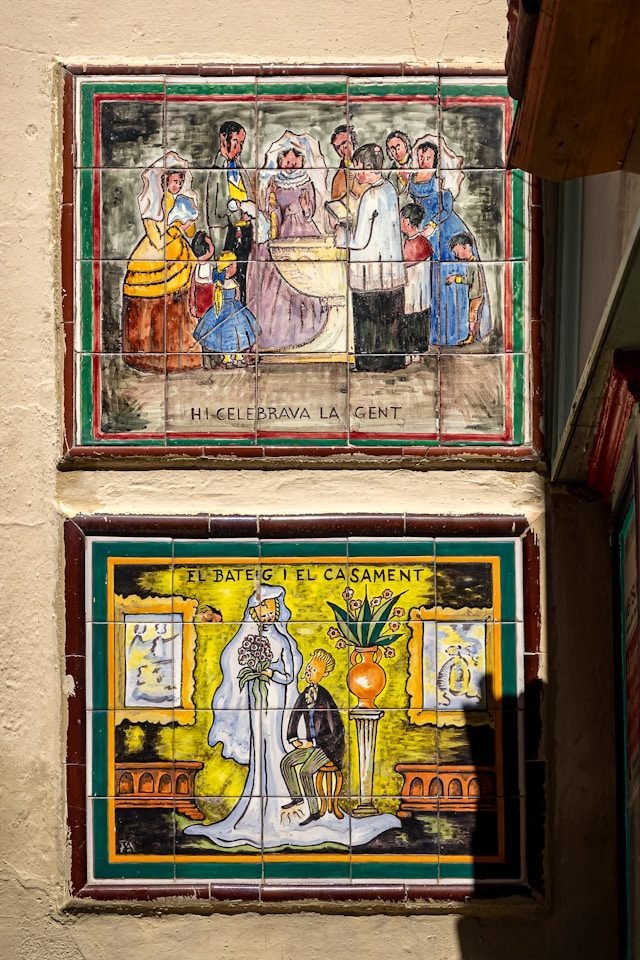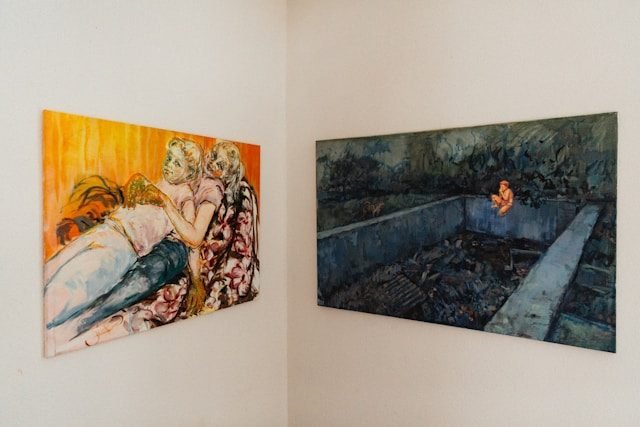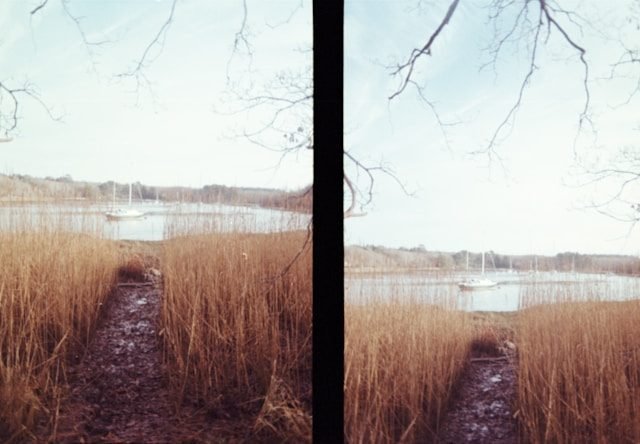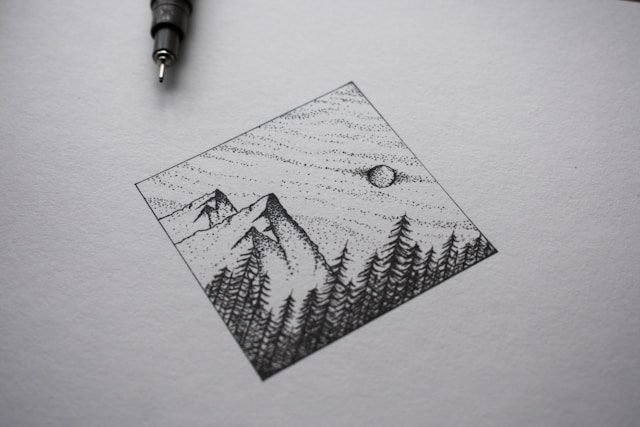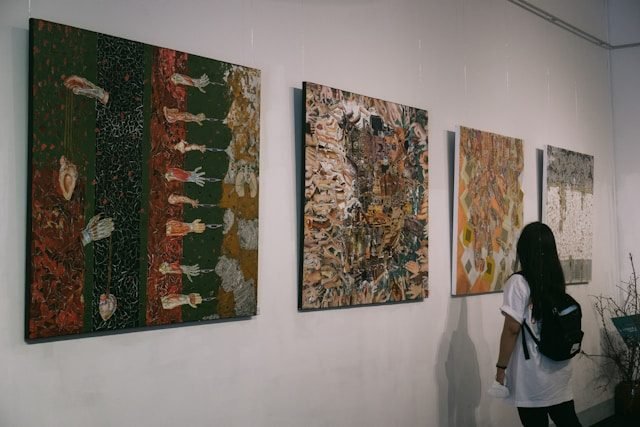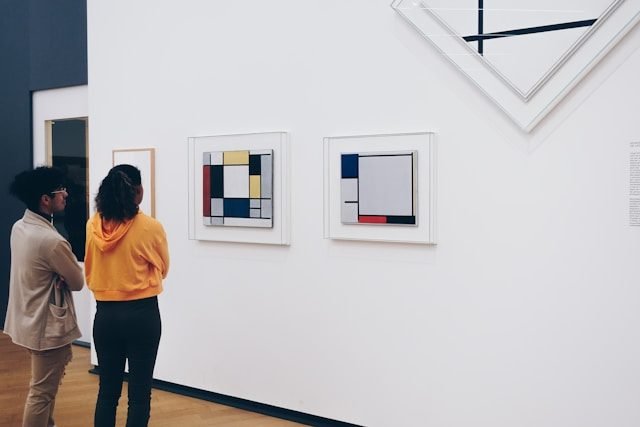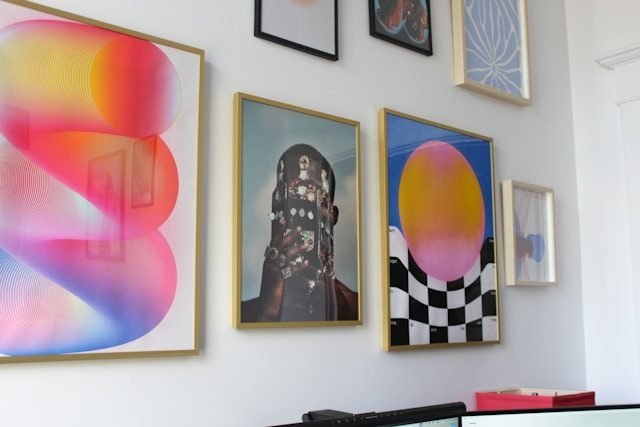Anamorphic illusion art is a fascinating artistic technique that distorts images in such a way that they appear normal and proportionate only when viewed from a specific angle or with a particular reflective surface. Derived from the Greek word anamorphosis, meaning “to transform” or “to form again,” this art form challenges traditional perceptions of space, depth, and perspective. It blurs the boundaries between two-dimensional and three-dimensional realities, creating optical illusions that captivate and confuse the viewer’s eye. This form of art has a rich historical background, a variety of techniques, and a profound influence on modern visual culture, architecture, and design.
Historical Origins of Anamorphic Art
The origins of anamorphic art can be traced back to the Renaissance period, a time when artists and scholars were deeply engaged in understanding mathematical principles of perspective. During this era, scientific advancements in optics and geometry played a crucial role in shaping artistic expression. The earliest known examples of anamorphic art emerged in the early 16th century, with notable figures such as Leonardo da Vinci experimenting with distorted drawings. Da Vinci’s sketches, including his famous Eye drawing, revealed an early fascination with manipulating visual perception.
Hans Holbein the Younger, a prominent 16th-century painter, is often credited with one of the most famous examples of anamorphic art—his painting The Ambassadors (1533). At first glance, the painting depicts two men standing beside an array of objects symbolizing knowledge and exploration. However, an odd, distorted shape stretches across the foreground. When viewed from an oblique angle, the shape reveals itself as a human skull—a striking memento mori reminding viewers of mortality. Holbein’s work showcased not only technical skill but also a profound conceptual depth, turning anamorphosis into a vehicle for philosophical reflection.
In subsequent centuries, anamorphic art spread across Europe, particularly in churches, palaces, and public spaces. Baroque artists and architects embraced anamorphic techniques to create illusions of soaring ceilings, extended corridors, or heavenly scenes. These early explorations laid the foundation for contemporary anamorphic illusions that now appear in street art, installations, and digital media.
Principles of Anamorphic Perspective
At its core, anamorphic illusion art relies on the manipulation of perspective to distort an image intentionally. Traditional perspective techniques involve creating the illusion of depth and three-dimensionality on a flat surface by using converging lines, vanishing points, and scaling. Anamorphic perspective, however, pushes this further by stretching or skewing an image so severely that it appears incomprehensible from a head-on view.
The key principle lies in the vantage point. An image is designed to look proportionate only when seen from a particular angle or through a specific device such as a cylindrical mirror. The human eye and brain naturally interpret light, shadow, and perspective cues to create a sense of depth. Anamorphic artists exploit these visual mechanisms by recalibrating the rules of proportion.
Two major types of anamorphosis are commonly recognized:
- Oblique Anamorphosis – This form requires the viewer to stand at a particular angle or height to see the image correctly. Street artists often use this method to create 3D sidewalk chalk drawings that appear to rise from or sink into the pavement.
- Mirror Anamorphosis – This form uses a curved mirror, often cylindrical or conical, to reflect a distorted image back into its intended shape. Early examples can be found in Renaissance art, while modern variations appear in installations and sculptures.
Techniques and Tools
Creating anamorphic illusion art requires a combination of artistic skill and mathematical precision. Artists often begin with a standard, proportionate image, which is then transformed using perspective grids and geometric calculations. In traditional methods, a grid system is projected onto a surface at an oblique angle. The artist then stretches or warps the image according to the distorted grid so that it appears correct from a predetermined viewpoint.
With the advent of digital tools, contemporary anamorphic artists often use 3D modeling software, computer-aided design (CAD) programs, and projection mapping. These technologies allow artists to simulate distortions virtually before applying them to real-world surfaces. For street art, durable chalks, acrylics, and spray paints are commonly used to withstand outdoor conditions.
The choice of surface also influences the outcome. Uneven or textured surfaces can enhance the illusion, creating depth and realism. Conversely, highly polished or reflective materials may require more precise calculations to account for light distortion. Artists must consider factors such as lighting, viewer distance, and eye level to achieve a convincing illusion.
Applications of Anamorphic Illusion Art
- Street Art and Public Installations
In recent decades, anamorphic illusion art has experienced a resurgence in urban environments. Street artists like Julian Beever, Edgar Müller, and Kurt Wenner have gained international acclaim for their large-scale chalk drawings that seemingly open up holes in the ground, create towering waterfalls, or depict fantastical scenes emerging from city sidewalks. These installations invite public interaction, encouraging viewers to photograph themselves as part of the illusion.
- Architecture and Interior Design
Architects and interior designers use anamorphic principles to alter the perception of space. Murals on walls and ceilings can make small rooms appear larger, create the illusion of skylights, or depict grand architectural features that do not physically exist. In modern museums and exhibition spaces, anamorphic installations often guide visitors through immersive storytelling experiences.
- Advertising and Marketing
Brands increasingly incorporate anamorphic illusions into campaigns to capture public attention. Large-scale 3D billboards, augmented reality (AR) displays, and projection-based installations create memorable brand experiences. For instance, an advertisement may appear to spill out of a building façade or transform a public square into an interactive visual spectacle.
- Film, Photography, and Digital Media
Cinematographers and photographers use anamorphic lenses and projection techniques to achieve unique visual effects. While these tools originally emerged for technical reasons—widening the field of view or compressing images—they also inspire artistic applications. In digital media, artists integrate virtual anamorphic illusions into augmented and virtual reality platforms, expanding the medium’s creative possibilities.
Cognitive and Psychological Impact
One of the most compelling aspects of anamorphic art is its impact on human perception. The brain relies on visual cues—perspective, shading, and proportion—to interpret spatial relationships. Anamorphic illusions exploit these cues, forcing the brain to reconcile distorted information. This cognitive challenge creates a sense of wonder and surprise, as the image suddenly “snaps” into focus from the correct viewpoint.
Psychologically, the experience of anamorphic art taps into curiosity and playfulness. It blurs the boundary between reality and illusion, prompting viewers to move around, experiment with angles, and engage physically with the artwork. This interactive quality enhances emotional resonance, making anamorphic installations popular in public spaces, museums, and digital exhibitions.
Notable Artists and Works
- Julian Beever – Known as the “Pavement Picasso,” Beever creates hyper-realistic sidewalk chalk drawings that appear three-dimensional when viewed from a specific angle. His works often feature playful scenes, such as giant soda cans or deep crevices in city streets.
- Kurt Wenner – A pioneer of modern street anamorphosis, Wenner combines classical art training with mathematical precision to create large-scale illusions inspired by mythology and Renaissance themes.
- Felice Varini – Unlike traditional anamorphic artists who distort images, Varini creates geometric shapes that align perfectly only when viewed from a designated spot. His works often span multiple walls, floors, and ceilings, unifying architectural spaces through perspective.
- Edgar Müller – Known for his dramatic 3D pavement paintings, Müller transforms urban landscapes into scenes of waterfalls, lava flows, or icy caverns, often on a monumental scale.
Challenges in Creating Anamorphic Art
Anamorphic illusion art requires more than creativity; it demands technical mastery. Artists must account for factors such as perspective distortion, viewing height, and environmental lighting. Outdoor installations face additional challenges, including weather conditions, surface texture, and public accessibility. Moreover, because the illusion often works only from a single vantage point, artists must ensure that the viewing angle is clearly defined for maximum impact.
Time and labor intensity are also significant. Large-scale anamorphic artworks may take days or weeks to complete, particularly if they cover uneven or multi-surface areas. Digital tools can streamline planning, but the execution still requires meticulous craftsmanship and an understanding of optical principles.
The Role of Technology in Modern Anamorphic Art
Advances in digital design, 3D modeling, and projection mapping have transformed anamorphic art, expanding its scale and complexity. Artists can now simulate distortions in virtual environments before applying them to physical surfaces, reducing errors and streamlining the creative process. Projection-based anamorphic art has also gained popularity, allowing for dynamic, moving illusions that interact with their surroundings in real-time.
Augmented reality (AR) and virtual reality (VR) have introduced new dimensions to anamorphic illusions. In AR, digital distortions overlay real-world environments through smartphone cameras or AR glasses, creating interactive visual experiences. VR environments, meanwhile, can simulate impossible perspectives, further pushing the boundaries of visual illusion.
Cultural Significance and Future Directions
Anamorphic illusion art resonates with audiences because it challenges conventional ways of seeing. It embodies the idea that reality is not fixed but can be reshaped through perspective—a concept with profound philosophical implications. In a world increasingly driven by digital media and immersive technologies, anamorphic art bridges the gap between classical artistic traditions and contemporary visual innovation.
Looking ahead, the integration of AI, holographic projection, and advanced optical systems may open even more possibilities for anamorphic illusions. Interactive installations could respond to viewer movements in real-time, while large-scale urban projects may incorporate anamorphic elements into cityscapes. As artists continue to experiment with physical and digital spaces, anamorphic art will likely evolve into increasingly sophisticated and immersive forms.
Conclusion
Anamorphic illusion art stands as a testament to human ingenuity, blending artistic vision with mathematical precision to create works that defy ordinary perception. From Renaissance paintings to modern street art and digital installations, anamorphosis has captivated audiences for centuries. It invites viewers to move beyond passive observation, engaging actively with perspective, space, and imagination. As technology advances and artistic practices evolve, the future of anamorphic illusion art promises to be as dynamic and visually compelling as its rich historical past.

































































































































































































































































































































































































































































































































































